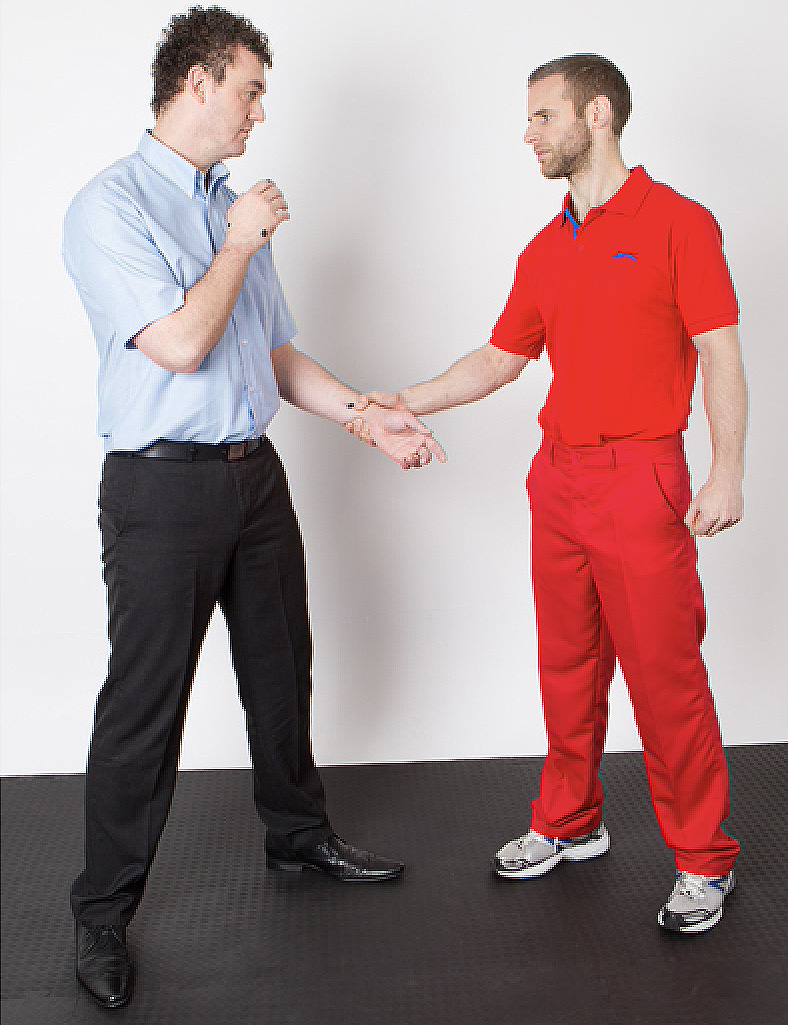Risk Assessment
The NAPPI Risk Assessment documents have been developed by an Independent Biomechanical Expert with relevant expertise and are formally reviewed every two years. They are comprehensive and available to all client-partners via the Organisation Account at no additional charge.
Restraint Reduction Network Training Standards
Risk Assessments comply with the requirements of the RRN Training Standards, that they must include the ease of training, complexity, effectiveness, and any fragility of the skills. The Standards state that risk assessment for each physical restraint must ensure the suitability of the physical restraint for the population it is intended for (RRN, 1.3.4, page 44).
The NAPPI Approach to Risk Management
NAPPI only teaches skills that have been deemed to cause minimum impact and to be appropriate for use across all populations. Any individual risk factors that vary the residual risk levels must be explored within an ‘Individual Risk Assessment’.
Residual Risk will often be a risk worth taking. Dynamic risk assessment, considering anticipated levels of risk associated with alternate courses of action, should be undertaken to determine the best course of action. Factors that may vary the residual risk level include health & fitness of staff members (which may in turn result in anthropometrical challenge and above average required effort). Competence of staff members (with particular regard to communication, decision making, and problem-solving skills) may also be a variable factor.
Environmental risks (including those posed by other persons present, as well as material structures) should be considered, alongside individual risk factors (including physical health conditions and any known history of trauma). Individual risk factors that are identified must be entered onto an ‘individual risk assessment form’ that in turn references this related Risk Assessment document. Following implementation of identified risk management methods, where a risk is not removed altogether the following levels of residual risk apply.
RISK LEVEL |
DESCRIPTION |
|---|---|
| Low | Potential for minor injuries to be sustained. Complexity of the intervention is not expected to increase.
|
| Medium | Potential for moderate injuries to be sustained, and medical attention required. Complexity of the intervention may be increased.
|
| High | Potential for serious injuries to be sustained, and medical attention required. Staff member(s) likely to be unable to continue in allocated role(s). Complexity of the technique may be significantly increased, and require dynamic problem-solving.
|
Each Risk Assessment contains a sequence of professional photographs presenting each skill into step-by-step elements.
Photo Sequence



Information is gathered using a variety of recognised assessment frameworks and the data is integrated into the Risk Assessment structure. You can find out more about these in the tab below:
- Rapid Entire Body Assessment (REBA)
Used to make a rapid evaluation of the risk of musculoskeletal disorders (MSD) associated with certain tasks. The tool uses a systematic process to assess both upper and lower parts of the musculoskeletal system for each element of the skill.
See more details on REBA scores here.
- The Borg Rating of Perceived Exertion (RPE) scale
Used to measure an individual’s effort, exertion, breathlessness and fatigue during a physical activity. It provides a measure of how hard an individual feels their body is working, based on the physical sensations that the individual feels.
See more details on BORG Ratings here.
- Benner’s Stages of Clinical Competence
Benner’s theory became known as “Novice to Expert” and suggests that education and experience, contribute to a nurse’s development in a way that enables them to fully understand what it means to provide high quality patient care.
See more details on BENNER here.
REBA Score
3
BORG Score
8.20
NAPPI Benner Level Recommended
Novice (or above)
- N-10 Skill Selection Tool
The NAPPI-10 (N-10) is a Skill Selection tool. It was developed over 40 years ago by the NAPPI Company and is used to assist with the development (and selection) of any new physical skill being considered for inclusion into the NAPPI curriculum.
See more details on N-10 here.
- Approved Adjustments
At times adjustments to skills are requested and the Approved Adjustment procedure will be followed. The appropriate person with relevant experience will assess the need for an adjustment based on risk in each area and will review factors that cause elevated risk and any injuries or harm that may be caused from its application in real life.
Download a copy of the NAPPI Approved Adjustments Flow Chart here.
Contact Us
To discuss further, please contact the team on:
Call 01723 353353 to speak to NAPPI uk
Click here to email NAPPI uk
